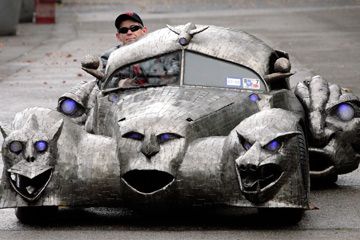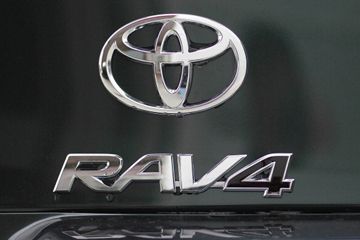Crossover sport utility vehicles are among the hottest selling vehicles on the market today, and for good reason. They offer the ride height and roominess of a traditional SUV, and often have a better ride quality and superior fuel economy.
They're called crossovers because they're usually built on car (or car-like) platforms, not truck platforms -- think of them as tall station wagons or hatchbacks. These attributes have proved very popular with buyers. Crossovers accounted for nearly a quarter of all vehicle sales in 2010 [source: Koba].
Advertisement
But while crossovers have become sales leaders fairly recently, the vehicles themselves aren't an entirely novel idea. There's no truly strict definition of a crossover, so many early two-wheel and four-wheel-drive wagons and SUVs can fit into that category. (For those who want to get technical, nearly all crossovers use unibody construction, while truck-based SUVs are built with body-on-frame construction.)
Arguably, the first crossover goes back to just after World War II when the company that would become Jeep, Willys-Overland Motors, released a vehicle called the Jeepster. The Jeepster was a two-wheel-drive convertible coupe that was designed to appeal to people who might be turned off by the utilitarian qualities of other Jeep vehicles. The car-like vehicle didn't sell all that well, and was discontinued after three years [source: American Jeepster Club].
Another Jeep that could be considered a crossover was the tough and popular Jeep Wagoneer, which featured a station-wagon body atop a four-wheel-drive Jeep chassis. That car was made for almost 30 years.
Skipping ahead to the 1980s, we can find a more direct precursor to today's crossover SUVs in the AMC Eagle. Imagine a typical 80s station wagon with huge tires and big ground clearance and you have the Eagle in a nutshell. But it also boasted all-wheel-drive, which allowed the wagon to go anywhere and handle just about any weather [source: AOL Autos]. However, the time just wasn't right for those kinds of vehicles -- yet.
It was the 1990s that made SUVs truly popular in America, with truck-based sport utilities like the Ford Explorer became big sellers. Car-based vehicles like the Toyota RAV4 and the Honda CR-V (both based on compact cars) paved the way for crossovers to become in demand. The Lexus RX300, one of the first luxury crossovers, proved to be a huge success as well.
As time moved forward and gas prices went skyward, the big, truck-based SUVs of the 1990s began to fall out of favor with buyers, many of whom had little use for their supposed off-road abilities but liked their cargo space and ride height. Now, it's safe to say most SUVs in America are crossovers. Even the brand-new 2011 Ford Explorer, once a traditional SUV mainstay, rides on the same platform as the Ford Taurus sedan.
For more information about crossover SUVs, follow the links on the next page.
Advertisement



